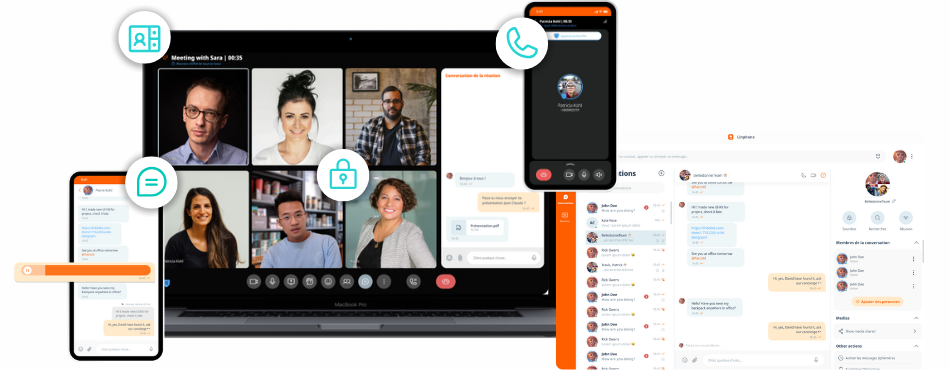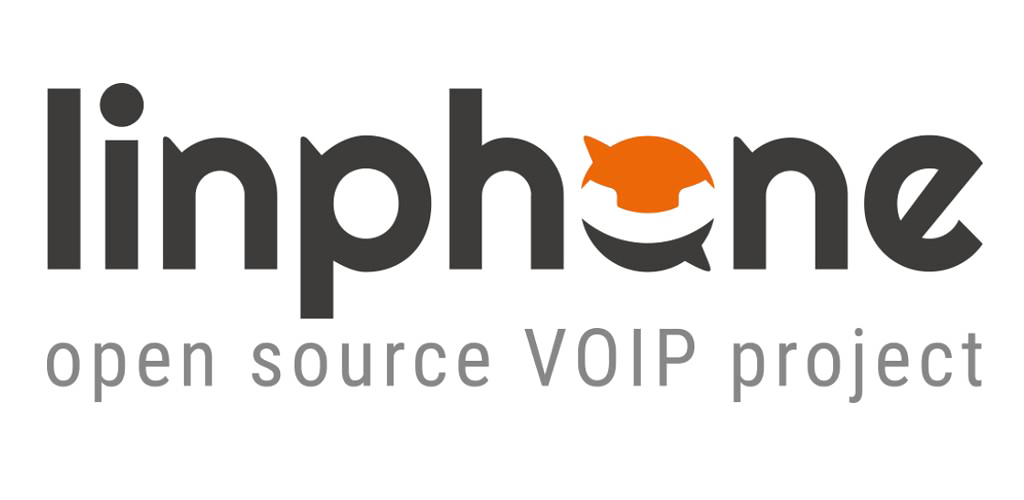The End of Skype: Why Linphone is the Open Source VoIP Alternative to Adopt

To all the fans of the 2000s… the end of Skype has been announced. After the disappearance of MSN (Windows Live Messenger) and its iconic wizz – today, it is Skype’s turn to bid farewell.
As a reminder, Skype was launched in 2003 by two entrepreneurs, Swedish Niklas Zennström and Danish Janus Friis. Designed as a VoIP (Voice over IP) software, it allowed users to make free audio calls over the Internet. This proprietary service came two years after Linphone, an open-source communications solution developed since 2001.
By 2004, Skype had experienced rapid growth and gained popularity worldwide, particularly in professional circles and for remote communications with its On-Premise installation.
But today, a new era is beginning. Microsoft, which acquired Skype in 2011, has decided to shut down the service, pushing users toward its new platform: Microsoft Teams with the Teams Phone in SaaS mode.
The End of Skype: What If Now Is the Right Time to Move Away from Microsoft Teams?
This scheduled end can be seen as an opportunity: the chance to regain control over your communications, step out of the GAFAM ecosystem, and opt for a more flexible and sustainable alternative.
A Service That’s Gradually Fading Away
The end of Skype is not just a simple announcement. It involves a series of concrete consequences for its users: the gradual cessation of technical support, no more security updates, and the end of bug fixes and improvements. In other words, continuing to use Skype will mean relying on outdated, vulnerable, and obsolete software. For both businesses and individuals, this represents a real risk: loss of reliability, privacy breaches, and reduced compatibility with modern systems.
Teams: A Logical Step or a Strengthened Dependency?
Microsoft is pushing Skype users to transition to Teams. However, Teams remains a proprietary and closed environment, limiting interoperability with other systems. Its centralized structure, exclusively hosted on Microsoft’s servers, eliminates the self-hosting options that some organizations prefer.
An Expensive Shift to Teams
Migrating from Skype for Business to Teams Phone represents a significant increase in costs for users. The monthly subscription increases from $1.70 to a range between $9.40 and $31.80 per user. In light of this inflation, open-source solutions appear as a more economical and better-suited alternative for different types of organizations.

An Open Source and Professional Alternative: The Linphone Suite
Linphone is one of the leading open-source alternatives in the field of unified communications, with over 20 years of expertise. This software relies on the open SIP protocol, ensuring interoperability with various existing systems. It is developed in France by the company Belledonne Communications, which also designs the open-source SIP server Flexisip and the library Linblinphone.
A Suite Designed for Your Needs
With the end of Skype, many organizations are looking for a solution that meets the requirements of mobility, telecommuting, infrastructure modernization, and sovereignty. Linphone checks all the boxes: accessible on all devices, interoperable, cost-effective, and platform management. Whether you are an SME, a local authority, an integrator, or a large company, this suite meets your specific needs. 
A Wide Functional Spectrum
The suite supports audio and video calls, instant messaging, and video conferencing, while ensuring the security of exchanges through advanced encryption mechanisms. Together, these software components form a powerful and modular real-time communication suite, capable of adapting to your specific needs.
- HD audio and video calls – excellent call quality;
- Meetings and group calls – up to 50 participants with advanced management tools for participants;
- Advanced telephony features – call history, call forwarding, call recording;
- Instant messaging – file sharing, voice messages, read receipts;
- Secure communications – end-to-end encryption for calls and messages, ephemeral messages, post-quantum encryption;
- User authentication – authentication systems via SSO and compatibility with the Digest protocol;
- Real-time notifications – call and message notifications via push notifications;
- Remote configuration – administration of features and user access remotely;
- Intelligent contact management – automatic contact synchronization and address book;
- Interopability with SIP systems – compatibility with SIP infrastructures for successful integration
👉 Learn more about the Linphone Suite.

Why Choose an Open Source VoIP Solution Over Teams?
The open-source model adopted by Linphone offers numerous structural advantages: the transparency of the source code allows for thorough security audits, while the use of open standards such as SIP ensures native interoperability. This approach also promotes technological independence by limiting intermediaries and avoiding vendor lock-in.
It allows for a flexible deployment, whether on a local infrastructure or in a sovereign cloud, without being constrained by a single service provider. This complete control over the technical environment and data processing chain ensures compliance with confidentiality requirements.
Unlike solutions like Teams, Linphone does not impose expensive licenses or proprietary cloud. You have the freedom to choose your hosting method based on your needs and sovereignty requirements.
Successfully Migrating from Skype to Linphone: Solutions and Support
Transitioning to another solution is no small matter, which is why it needs to be carefully prepared. Several barriers can arise: “everything must be the same” in terms of features and management, user adoption, loss of familiar processes, adaptation to new workflows, or resistance to change. Aware of these challenges, the Linphone teams support you in your communication projects by ensuring a smooth migration at your pace.
What to Do After Skype Stops in 2025, or How to Transition from Skype to Linphone?
The Linphone Suite combines the Linphone softphone with the Flexisip server suite, providing a complete environment capable of replacing your entire existing infrastructure.
Linphone offers all the advanced communication features: audio and video calls, chat, and video conferencing. On its side, Flexisip handles user account management, SIP sessions, push notifications, secure communication, and internal directories.
Thanks to the connection to a SIP trunk, you can also make and receive calls to and from the traditional telephone network, completely freeing yourself from proprietary solutions.
A Transition That Requires Preparation and Management
As with any tool change, the success of the migration to Linphone requires good preparation. User support is key to this transition, with several levers to activate.
It is essential to provide users with suitable resources such as the Linphone user guide, training on best practices within the organization, as well as getting started sessions. This approach reduces resistance to change.

User adoption is also achieved by highlighting the concrete advantages of this migration:
- Enhanced protection of communications thanks to advanced encryption
- Open-source philosophy ensuring transparency
- Respect for data confidentiality
- Long-term budget control without hidden costs
Another point of reassurance for technical teams and users: Linphone integrates seamlessly into the existing information system. The solution supports authentication via Microsoft user accounts through OpenID Connect compatibility, while LDAP integration ensures continued access to company address books, offering continuity of services.
👉 Check out the Linphone user guide.
Proximity Support
Belledonne Communications, experts in open-source VoIP for over 20 years, supports you in your migration. Based in France, in the capital of the Alps, the company provides a team of over 20 specialized engineers for technical implementation, training, adaptation to your specific needs, and the setup of custom hosting solutions.
With over 300 clients, 700,000 users of the free SIP service, and nearly one million downloads of the Linphone app, Belledonne Communications enjoys a strong international reputation.
👉 Learn more about Belledonne Communications.
Conclusion: The End of Skype is the Beginning of Independence
After MSN, replaced by Skype, and now Skype being replaced by Teams Phone… what will be the next step? The end of Skype marks the end of an era, but also the opening of new possibilities.
Open-source alternatives exist for unified communications – the Linphone Suite, with its open-source technology including advanced features like VoIP calls, chat, and video conferencing, meets your needs related to remote work, collaboration, mobility, or securing communications. It is the ideal candidate to move away from Microsoft Teams, replace Skype for Business, and migrate to a high-performance solution!
🚀 Free yourself, take back control of your communications.



